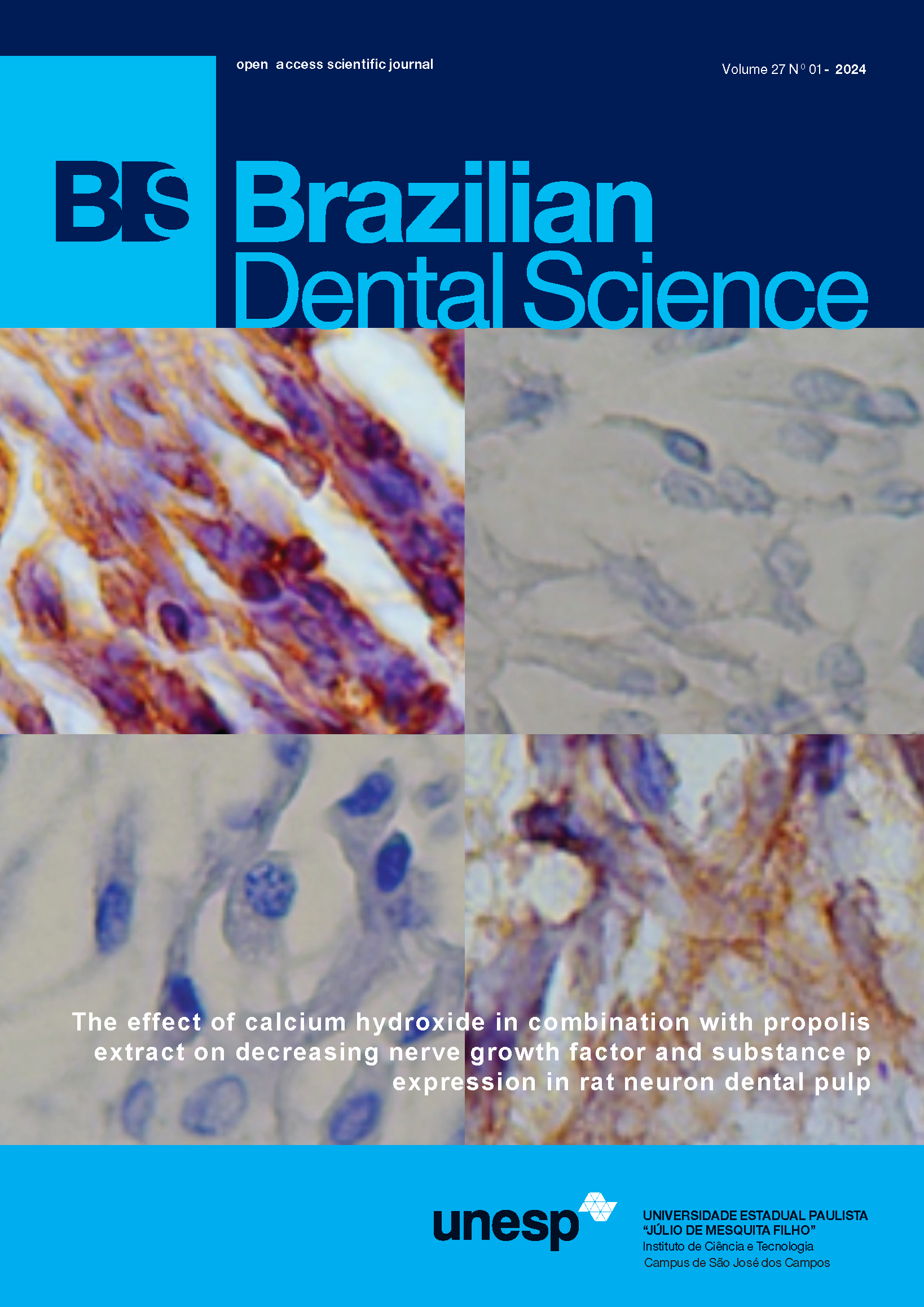Randomized, Double-masked, Placebo-controlled Clinical Trial on the Effects of Propolis and Chlorhexidine Mouthrinses on Gingivitis
DOI:
https://doi.org/10.14295/bds.2014.v17i1.947Abstract
Objective: The aim of this study was to compare the effects of typified propolis and chlorhexidine mouthrinses on gingival health in a randomized double-masked placebo-controlled clinical trial.
Methods: Sixty participants were randomized to 3 mouthrinse study groups: 1) 2% typified propolis (n=20); 2) 0.12% chlorhexidine (n=20), and 3) placebo (n=20). Participants rinsed unsupervised twice a day for 28 days. The Papillary Bleeding Score (PBS) was measured on the mesio-buccal surfaces of all teeth at baseline and 28 days thereafter. Co-variance analysis was employed to compare PBS average values and the number of sites with PBS ?2 among study groups. Sub-group analysis was further applied to participants who were <40 years-old.
Results: The results show efficacy of propolis mouthrinse when comparing before and after treatment protocols significantly for a reduction of mean PBS scores. When looking at younger participants after 28 days, propolis mouthrinse was superior to all groups in reducing mean PBS scores and significantly so when compared to 0.12% chlorhexidine mouthrinse.
Conclusion: The efficacy of 2% typified propolis mouthrinse was demonstrated in reducing the levels of gingival inflammation. These results need to be duplicated by other investigators by employing similar study protocols.
Descriptors: Randomized Clinical Trial, Propolis, Chlorhexidine, Gingivitis




